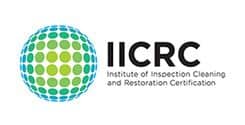Water damage is a common issue faced by property owners worldwide. It can result from various sources such as flooding, broken pipes, or natural disasters. Regardless of the cause, it's crucial to act promptly and efficiently to mitigate the damage and restore your property to its original state. One of the most critical aspects of water damage restoration is drying and dehumidifying the affected areas. In this article, we will discuss the steps to effectively dry and dehumidify your property after water damage.
1. Assess the Situation and Ensure Safety
Before starting the drying process, it's essential to assess the situation and ensure the safety of the occupants and yourself. Turn off the electricity and gas supply, and wear protective gear such as gloves, masks, and boots. Also, inspect the structural integrity of your property and ensure there are no hazards like weak ceilings or damaged floors.
2. Remove Excess Water
The first step in drying your property is to remove as much excess water as possible. Depending on the extent of the damage, you can use mops, towels, or a wet vacuum to extract the water. For large-scale flooding, consider renting a water pump to remove the water quickly and efficiently.
3. Sort and Dispose of Damaged Items
Sort through the items affected by water damage and decide which ones can be salvaged and which need to be disposed of. Porous materials like carpet, mattresses, and upholstered furniture are susceptible to mold growth and might need to be discarded. Non-porous items like plastic and metal can be cleaned and disinfected.
4. Circulate Air and Ventilate
Proper air circulation and ventilation are crucial in the drying process. Open windows and doors to allow fresh air into the property. You can also use fans and air movers to speed up the process. However, avoid using your HVAC system as it can spread contaminants throughout your property.
5. Dehumidify
Dehumidification is essential, especially in damp and humid environments. High humidity can slow down the drying process and promote mold growth. Use a dehumidifier to remove excess moisture from the air and maintain the humidity levels between 40-50%. Make sure to empty the water tank regularly and place the dehumidifier in the most affected areas.
6. Dry Out the Materials
Different materials require different drying techniques. For example, wooden furniture and flooring can be dried using air movers and dehumidifiers. On the other hand, drywall may need to be cut out and replaced if it is severely damaged. Consult a water damage restoration professional to determine the best drying methods for your property.
7. Monitor the Drying Process
Drying your property can take anywhere from a few days to several weeks, depending on the extent of the damage. Regularly monitor the progress by checking the moisture levels in the materials and the humidity levels in the air. Adjust the dehumidifier settings and reposition the air movers as needed.
8. Clean and Disinfect
Once your property is thoroughly dried, it's essential to clean and disinfect the affected areas to prevent mold growth and remove any contaminants. Use a combination of household cleaners and disinfectants to clean all surfaces, and consider hiring a professional cleaning service for a thorough deep clean.
Conclusion
Drying and dehumidifying your property after water damage is a crucial step in the restoration process. By following the steps outlined in this article, you can effectively mitigate the damage and restore your property to its pre-loss condition. Remember, if the damage is extensive or if you feel overwhelmed, it's always best to consult with a water damage restoration professional.







